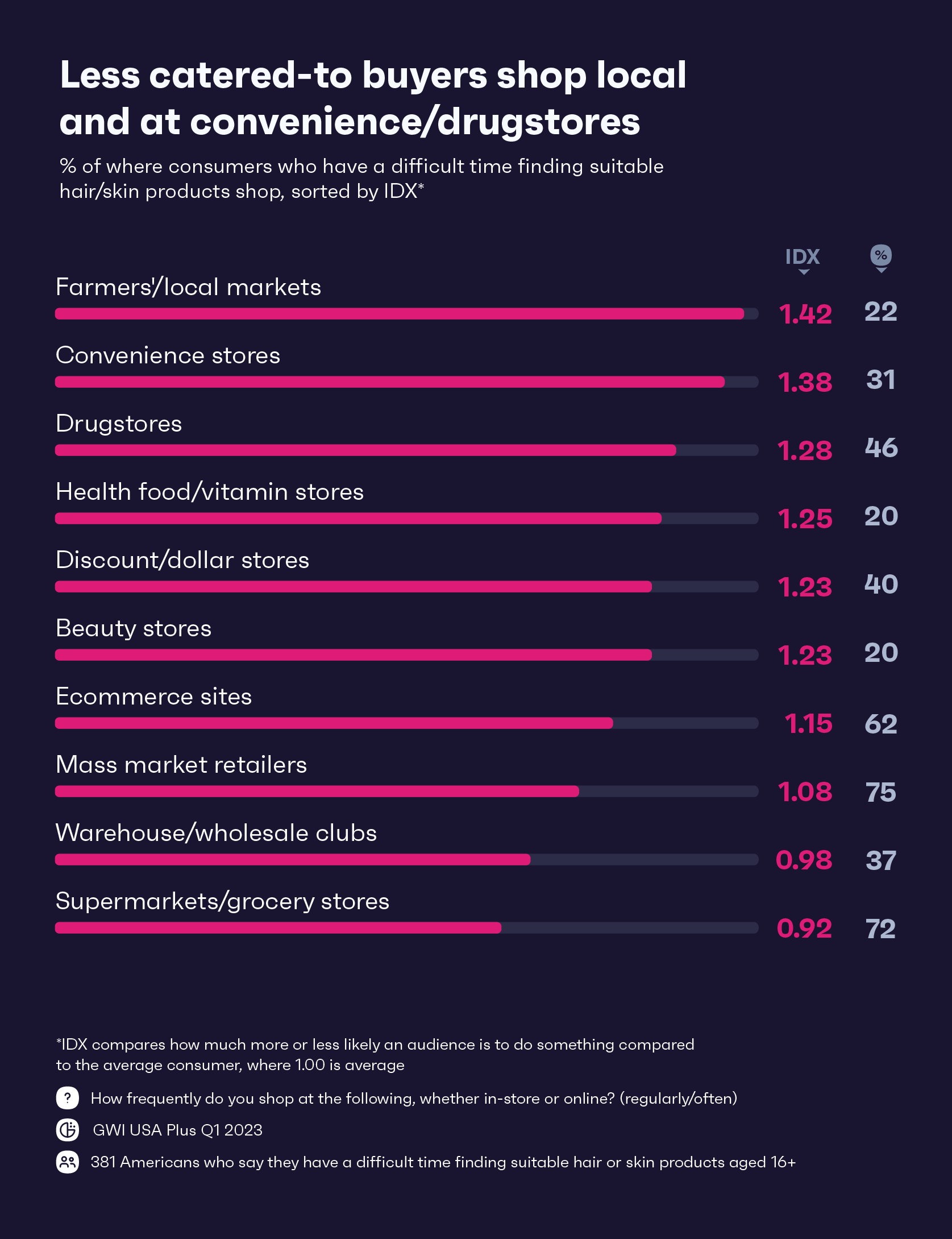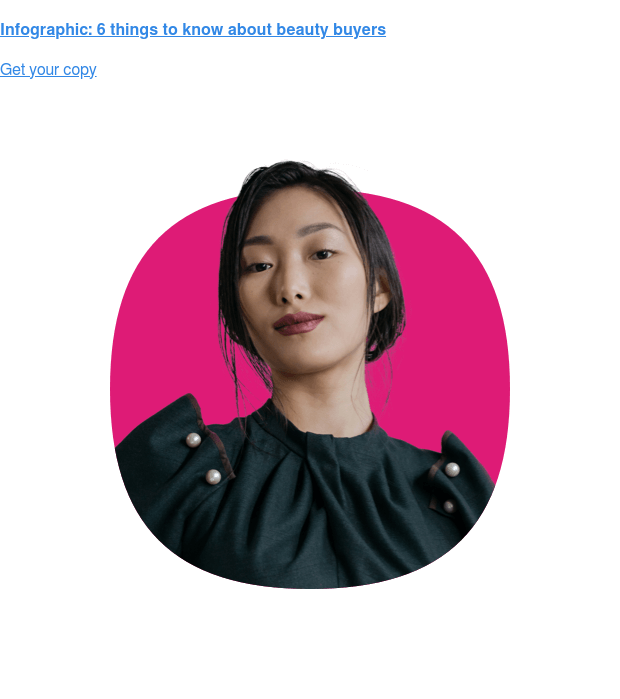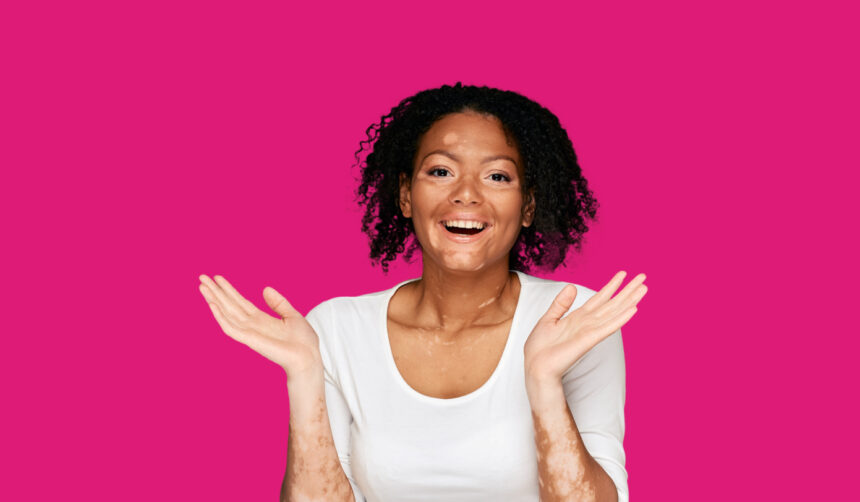“Self-expression should have no barriers or limitations.”
That’s Guive Balooch, global head of L’Oréal’s Technology Incubator, discussing inclusivity and accessibility in the beauty industry. It’s a simple statement, but removing the sector’s limitations and barriers is no small feat.
Beauty buyers (i.e. those who report buying cosmetics and skincare products regularly or often) want brands to reflect their values, and to be as inclusive and accessible as possible. The industry is on the right track, but improvements can always be made, especially in a time of artificial intelligence (AI) and low consumer trust.
74% of beauty buyers value inclusivity, 9% higher than the average American
Let’s explore how consumers feel about the beauty industry’s efforts around inclusivity and accessibility, where every beauty brand could improve, and what people really want to see in ads.
Hair is a topic that’s skin deep
Finding beauty items can be hard for some communities.
Black consumers are 2x more likely than the average American to say finding suitable hair products is difficult. And Black women, who are much more likely to have bought a hair care product in the last month, are in a particularly tough position. Not only are they more likely to buy hair goods, they also have a harder time unearthing the right ones.
Consumers, especially beauty buyers, want the industry to do better. Nearly half of beauty buyers want brands to offer product ranges that are inclusive of all hair types and skin colors.
The good news is many Americans think the industry is doing a good job of expanding inclusive beauty. For hair products, offerings for coily and wavy hair is a good place to start. And makeup & skincare products should target different skin tones, as well as sensitive skin.
Consumers who have a hard time finding suitable skin care and hair products have nuanced shopping habits. On top of working to understand what product selections and services this group wants, every beauty brand should look into placing more items at the store types shown below, where they’re more likely to shop.

Only 20% of consumers who have difficulty finding suitable products shop at beauty stores, which is actually on par with health food and vitamin stores. That said, they’re more likely to be shopping at convenience stores and drugstores, both of which are being visited more during this time of high inflation. Walgreens is on this trend already, and others ought to follow suit.
Accessible beauty products and services for all
When Americans were asked which groups would benefit the most from increased diversity, equity, and inclusion (DEI) efforts, disabled people were the top answer. This applies to the beauty market too, as beauty buyers listed disabled people as the top group that could use better representation in products/services.

48% of Americans experience some sort of longer-term medical condition, up 21% from Q2 2020. Sleep issues are the top side effect of these conditions, but 21% also experience mobility issues, which can affect putting on makeup and opening product packaging. It’s more important than ever that beauty brands step up by offering inclusive products for all.
Beauty buyers are 18% more likely than the average American to have self-confidence issues as a result of longer-term medical conditions
Multiple brands are offering easy-to-use products that anyone, regardless of physical ability, can use. Many of these brands were started by disabled people themselves, after frustration with a lack of action from mainstream brands. But that’s changing now, with some pretty intricate new beauty product arrivals on the scene; check out this lipstick applicator from L’Oréal.
Every cosmetic brand should think about inclusivity and accessibility when it comes to product packaging. Customers with painful conditions like arthritis can have a hard time opening packages and using cosmetic products, and those with vision problems will need other ways to tell products apart. With this in mind, mainstream brands have started to adopt features like easy-to-open lids and braille labeling.
Accessible designs are an improvement for everyone. From skin care to makeup, no one will complain about packaging that’s easier to open or products that are simpler to use; all it means is that everyone benefits and no one’s left out.
Yes to inclusive ads, but hold the AI
The beauty industry’s been advertising for over a century, and not all of it’s been good. But the sector now has an opportunity to change course by running positive ads focused on inclusivity and accessibility.
Nearly 7 in 10 beauty buyers think brands have a responsibility to create ads that feature diverse representation, and companies like Fenty Beauty and COVERGIRL have already had a headstart on this. Estèe Lauder is aiming to be one of the most inclusive beauty companies in the world, and Selena Gomez-founded Rare Beauty is making strides in the mental health and accessibility space.

Ads today should focus on including different body types, people with lighter and darker skin tones, people with disabilities, and different age groups. Including different body types comes at an important time; new weight loss drugs are undoing years of progress by bringing unhealthy and unrealistic bodies back into the limelight.
Beauty brands have a chance to counter this with body positive campaigns. Showcasing diverse models is a start, but including regular individuals in their marketing could resonate highly with beauty consumers. Dove’s been doing this, and other brands could follow in their footsteps.
Beauty buyers want brands to be authentic more than the average consumer, and this is a good chance for the sector to appeal to that.
While AI offers the beauty industry beneficial uses for customers like virtual try-ons and personalized tutorials, brands may want to avoid using it in ads.
Generative AI has already been proven to show unrealistic body types in response to prompts, and consumers show a low degree of confidence in determining real from AI-generated images. Beauty brands that make a commitment to using real individuals with no digital alteration can score big trust points with consumers, which is a hot commodity these days.
Inclusivity and accessibility takeaways
Offering a wide range of beauty products can reduce shopping time and stress for those who have trouble finding suitable products – from picking a foundation shade to match your skin tone, to choosing the right moisturizer for your skin type. And keeping those with accessibility issues in mind when designing products and packaging not only benefits everyone; it can drastically improve the lives of some consumers.
Thousands of beauty brands are competing for consumers’ attention, so honesty, authenticity, inclusivity and accessibility matter a great deal. The little things really do add up, and keeping everyone in mind is a winning approach.









